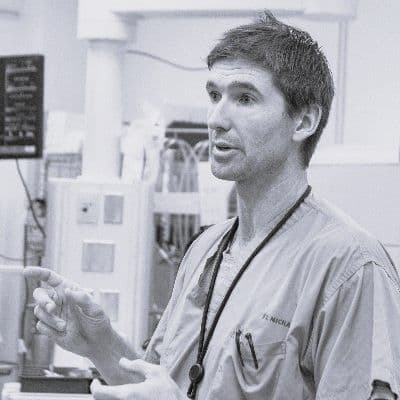Healthcare quality improvement

The challenge
Improvement by change at scale
Healthcare systems are facing major challenges. With a backdrop of shortage of staff1, changing expectations, and emerging healthcare needs, healthcare systems need to improve at significant scale and pace in the face of considerable financial pressures.
Healthcare operates as complex adaptive systems, with rich interdependencies between providers, structural elements and social systems. Performance depends not only on the knowledge and skills of individuals or teams, but also on contextual factors such as organizational structures, processes, behaviors, practices, and values. Contextual factors require attention and need to inform both development and spread of change.

the opportunity
Simulation for quality improvement
There is a growing momentum and number of documented cases for the use of simulation to critically examine current healthcare practices and to innovate and drive healthcare quality improvement.
Many simulation practitioners are now adapting their practices to realize the potential of simulation as an improvement method. Simulation has potential to fuel the expertise and lived experience of care providers and patients into improvement processes, through carefully designed, inclusive and engaging experiences and reflections.

Partnering to help scale simulation as QI method
Sim to Improve
Laerdal and Bond University, Australia, are working together on the “Sim to Improve” program. The goal is to help people use simulation to improve quality and safety goals within their healthcare system. Participants will learn how to apply translational simulation to diverse healthcare challenges, such as testing new processes, building teams and shaping culture to deliver safer care, system probing for identifying latent safety threats and more.

The Accelerate program
Laerdal's Accelerate program helps hospitals implement simulation-based education and quality improvement. Through in-situ scenarios, facilitators work with clinical educators to identify safety threats and enhance team performance. Over 3,000 clinicians have been trained, improving critical care responses across North America.
one million lives podcast
What is the new frontier for patient simulation?
"We've reached key milestones in patient simulation, and now it's time to leverage these advancements to enhance patient care in a tangible way."
- Dr. Barry Isenberg, President-elect of the Society for Simulation in Healthcare (SSH)

Case examples

No patient should ever be the first test case of a clinical space.
- Dr. Andrew Petrosoniak (Emergency Physician | Trauma Team Leader, St Michaels hospital, Toronto CA
one million lives podcast
Can patient simulation be used for continuous improvement?
"The training of individuals and teams is necessary for improved patient safety and outcomes, but not sufficient."
- Dr. Victoria Brazil



